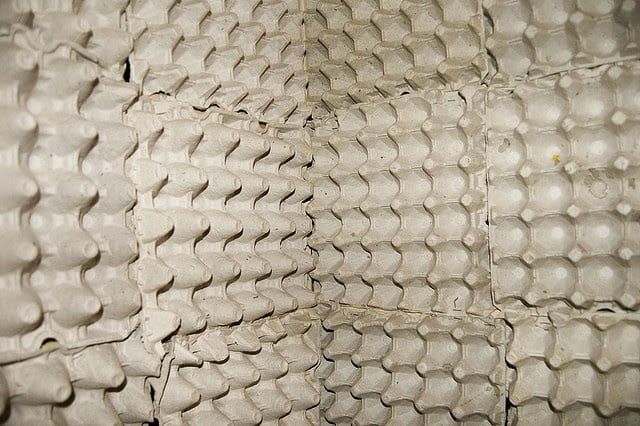
I was hoping that the topic of soundproofing with egg cartons would never come up again. The classic egg carton has been repurposed as many things over time. It has been a holder for miscellaneous screws and nails. It has also been used or tried to be used as a sound diffuser which it is not nor ever will be a sound diffuser. It is not and never will be a material type that you will use for soundproofing with egg cartons. If you are using soundproofing with egg cartons as a guide to reduce the noise transmission from a noise source to a receiver. In order to reduce noise transmission from a source to a receiver, you must use a barrier technology that is designed to treat the frequency and amplitude of the noise issues you have measured. Egg cartons are not a barrier technology and they are not a diffusion technology. They are for holding and transporting eggs. let’s leave their function to the egg. You will never achieve any type of soundproofing with egg cartons no matter how you try or what you read.
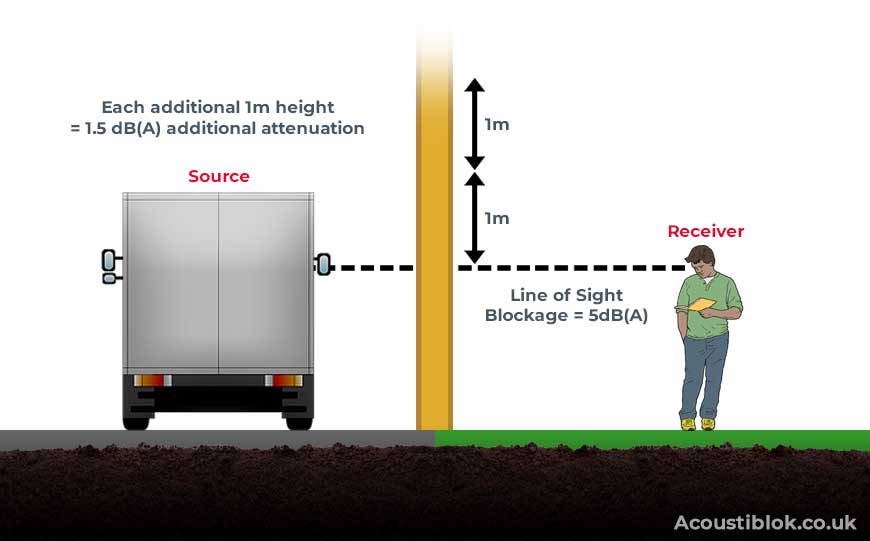
Noise transmission is serious. Our world has gotten much smaller and noise issues are everywhere. Our noise measuring service has grown exponentially over the years, At Acoustic Fields, we offer a noise measurement and design service. This process is simple and requires a cell phone, our apps, and our online data form. We send you the apps and you download the apps onto your cell phone. You take the noise measurements over a seven day period where you take measurements during the quiet part of each day and the loudest part of each day. This measurement procedure produces minimums and maximums. We then look at the frequency that is producing the issues. If it is a lower frequency, we will design one barrier type. If it is noise that is middle and high frequency energy above 100 Hz. then we must use a barrier technology that is specifically suited for this frequency range. This is why noise measurement is so critical. Every frequency range has its own material type that is used to attenuate noise transmission. With noise issues, you never want to pay for more material type than you need to treat the issues. https://www.acousticfields.com/sound-barrier-technology/
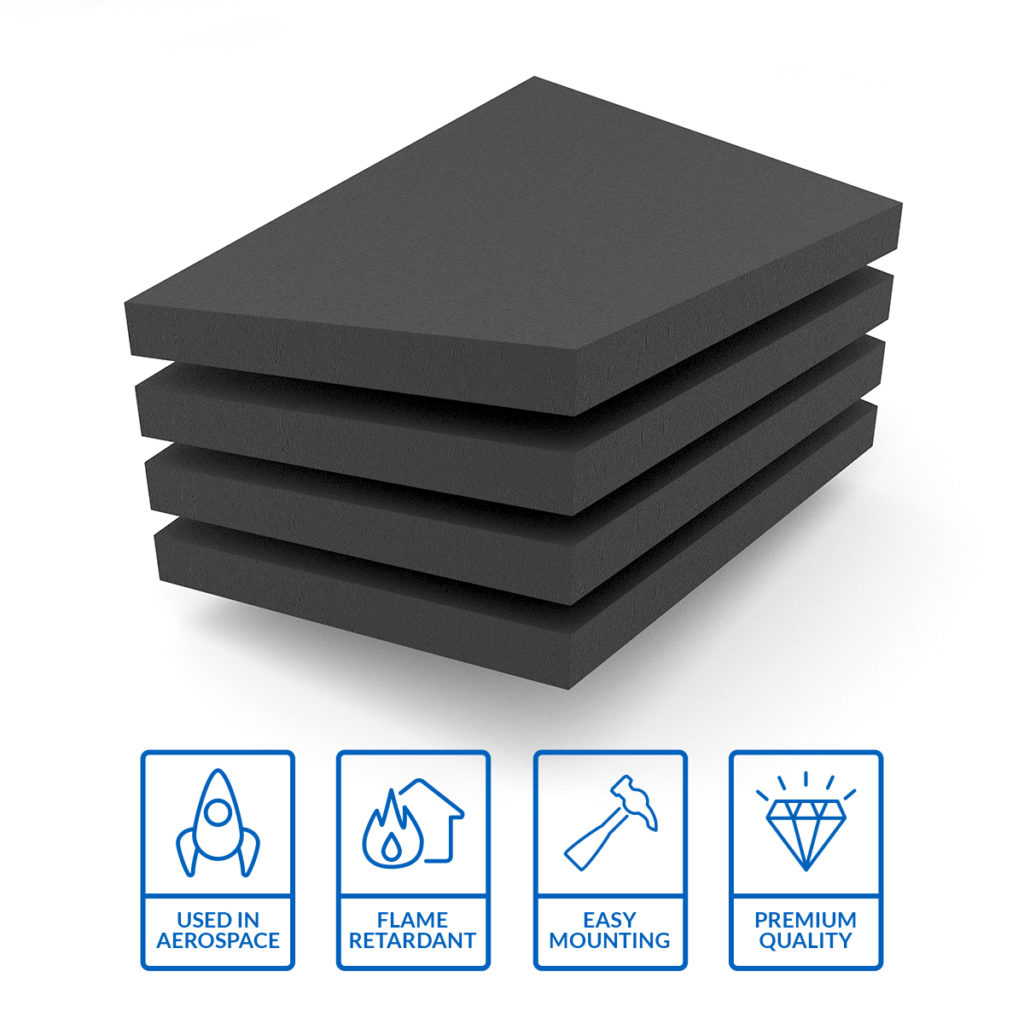
If sound absorption is your strategy to deal with your acoustical issues inside the room, then you must consider open celled foam. It is the most economical, lightweight, and effective material type to use for middle and high frequency absorption. You want to stay with the open celled acoustic foam not the closed cell. The closed cell is used in chair cushions and couches. It is called closed cell because the cells that it is made of are closed to produce support for overweight Americans. No sound absorption with closed cell foam. Just weight absorption. Open celled foam was designed for sound absorption. Airborne energy goes into the cells of open celled foam and then creates friction which produces heat. With heat, we have an energy transformation occurring which produces absorption. Open celled foam will give you the material type to treat reverberation times commonly referred to as echo which it is not. High reflections or reverberation times interfere with speech intelligibility or how many words per sentence we can make out due to the room distortion. Stay with an open celled foam that was designed specifically for music and voice. Not all open celled foams are created equal. https://www.acousticfields.com/product/acoustic-foam/
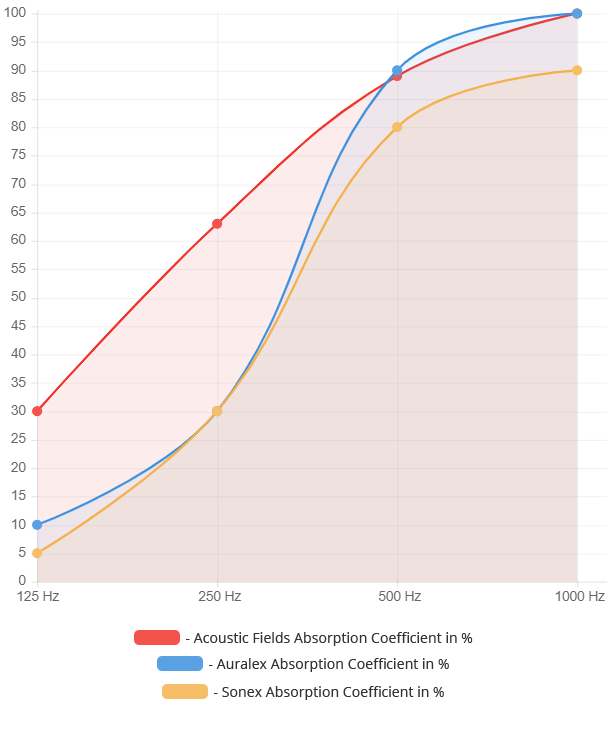
Our proprietary foam technology took 8 years and 2 M to create. It was designed specifically for music and voice. It was never designed to be a noise barrier technology. It was designed to treat music and voice. Music and voice are special and you need to absorb to treat music and voice using the proper rates and levels of absorption. You must use a linear absorption approach and go after each octave band equally over the frequency range of the voice and music. Building insulation is a common material type that is used to absorb middle and high frequencies. It does absorb but too much. It over absorbs too much energy and that improper use of rate and level destroys the nuisance and delicacy of our music and voice.
Soundproofing with egg cartons is another one of those acoustic myths that are so prevalent in today’s acoustical world. Another popular myth is that foam is a “bass trap”. Foam is no such thing. It never was and never will be. Another myth is that rooms have echo. It is not echo. It is reflections added together from all room boundary surfaces. https://dictionary.cambridge.org/us/dictionary/english/echo With any acoustical issue, you must identify and define the issue. Without a complete understanding of all the issues you are just guessing and guessing with noise is a fool’s game. With noise transmission as with sound absorption treatments you must first look at the numbers for room modes, reverberation times, room loading, and a whole host of other variables
https://www.merriam-webster.com/dictionary/noise Once you have quantified the acoustical issues, you can then assign the proper type, amount, and position of the treatment type. You want to spend and budget just enough to solve the issue at hand and not any more than you have to. This paradigm applies to both treatment and noise.


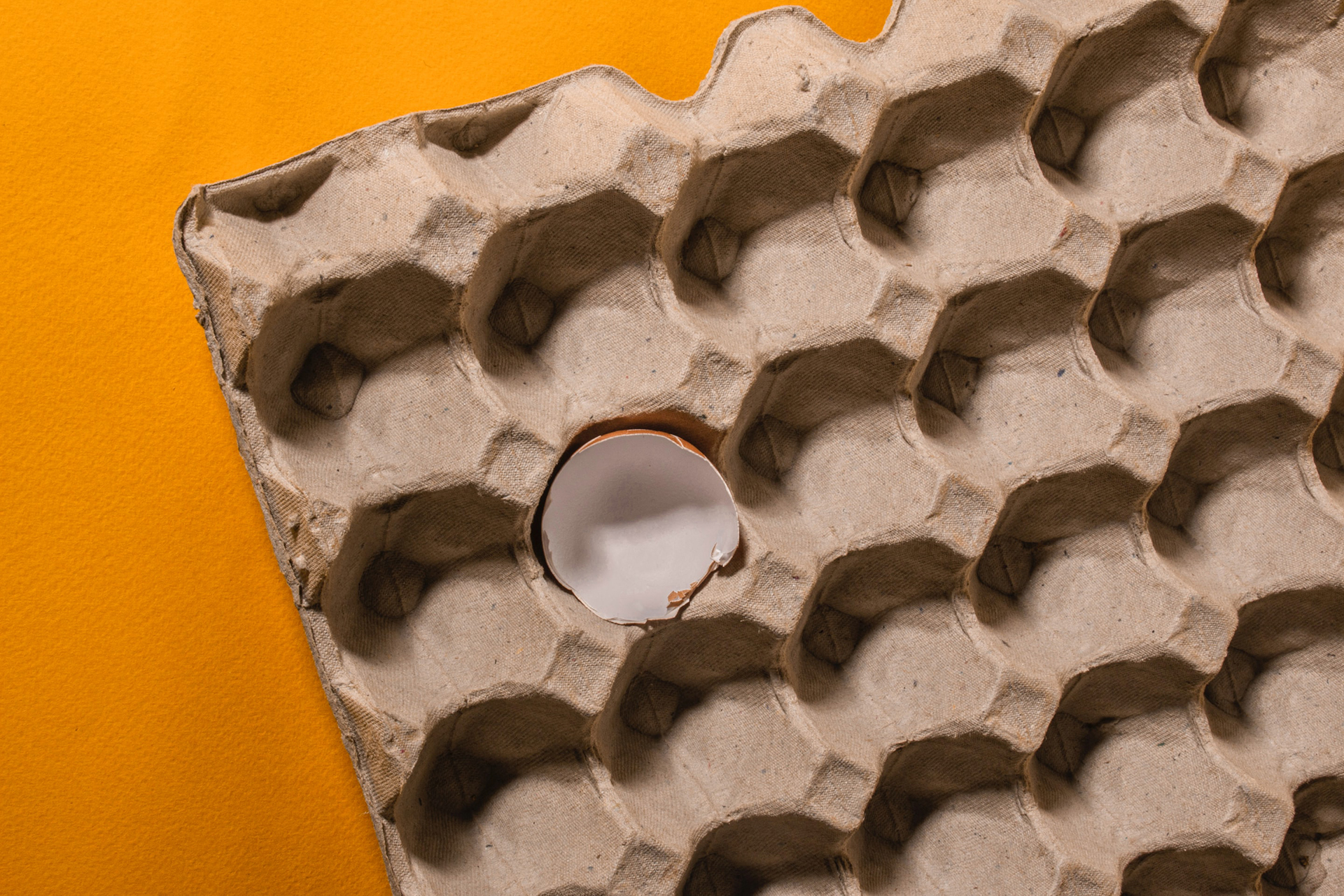





The discussion on ductwork noise transmission from Acoustic Fields highlights crucial aspects of HVAC system acoustics. The movement of air…
Great build plans. thank you Denis
You must use absorption. Never place a chair against a wall.
A friend and I built several diffusors using these plans and they turned out absolutely beautiful. Very good instructions and…